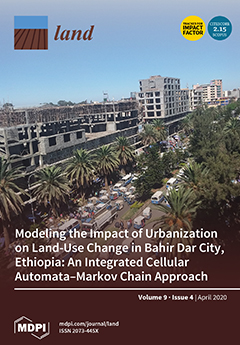Resource information
Land use and land cover change (LULCC) is a critical factor for enhancing the soil erosion risk and land degradation process in the Wabi Shebelle Basin. Up-to-date spatial and statistical data on basin-wide erosion rates can provide an important basis for planning and conservation of soil and water ecosystems. The objectives of this study were to examine the magnitude of LULCC and consequent changes in the spatial extent of soil erosion risk, and identify priority areas for Soil and Water Conservation (SWC) in the Erer Sub-Basin, Wabi Shebelle Basin, Ethiopia. The soil loss rates were estimated using an empirical prediction model of the Revised Universal Soil Loss Equation (RUSLE) outlined in the ArcGIS environment. The estimated total annual actual soil loss at the sub-basin level was 1.01 million tons in 2000 and 1.52 million tons in 2018 with a mean erosion rate of 75.85 t ha−1 y−1 and 107.07 t ha−1 y−1, respectively. The most extensive soil loss rates were estimated in croplands and bare land cover, with a mean soil loss rate of 37.60 t ha−1 y−1 and 15.78 t ha−1 y−1, respectively. The soil erosion risk has increased by 18.28% of the total area, and decreased by 15.93%, showing that the overall soil erosion situation is worsening in the study area. We determined SWC priority areas using a Multi Criteria Decision Rule (MCDR) approach, indicating that the top three levels identified for intense SWC account for about 2.50%, 2.38%, and 2.14%, respectively. These priority levels are typically situated along the steep slopes in Babile, Fedis, Fik, Gursum, Gola Oda, Haramaya, Jarso, and Kombolcha districts that need emergency SWC measures.


